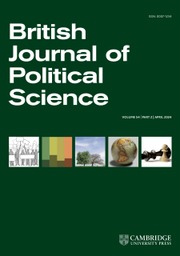Article contents
Organized Labor as the New Undeserving Rich?: Mass Media, Class-Based Anti-Union Rhetoric and Public Support for Unions in the United States
Published online by Cambridge University Press: 14 August 2017
Abstract
Labor unions play a prominent role in the economy and in politics, and have long been depicted by opponents as an overly powerful, corrupt and economically harmful institution. In labor-related news in recent years, anti-union rhetoric has regularly focused on union workers themselves, frequently portraying them as overpaid, greedy and undeserving of their wealth, while also drawing a contrast between the compensation of union vs. non-union workers. This type of rhetoric is referred to here as class-based anti-union rhetoric (CAR). Despite its prevalence, it remains unknown whether CAR affects public opinion toward unions. This study uses a series of national survey experiments to demonstrate that exposure to CAR reduces the perceived similarity of targeted union workers, unions’ perceived deservingness of public support and support for pro-union legislation. Moreover, CAR repeatedly nullified or reversed the otherwise positive relationship between the strength of worker identity and solidarity with union workers.
Information
- Type
- Articles
- Information
- Copyright
- © Cambridge University Press 2017
Footnotes
Department of Political Science, Stony Brook University (email: john.v.kane@stonybrook.edu); School of Public Policy and Department of Political Science, University of California, Riverside (email: bnewman@ucr.edu). We wish to express our deep gratitude to Chuck Taber for his assistance with this project, as well as participants at the 2015 Identity Politics Research Group meeting at the University of Connecticut for their thoughtful insights on an earlier version of this manuscript. Finally, we also wish to thank the anonymous reviewers and editor for their helpful comments and suggestions. Data replication sets are available in Harvard Dataverse at: doi:10.7910/DVN/XT08HW and online appendices are available at https://doi.org/doi:10.1017/S000712341700014X
References
- 26
- Cited by

